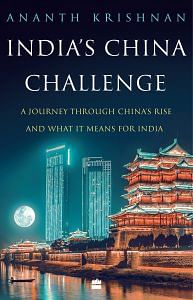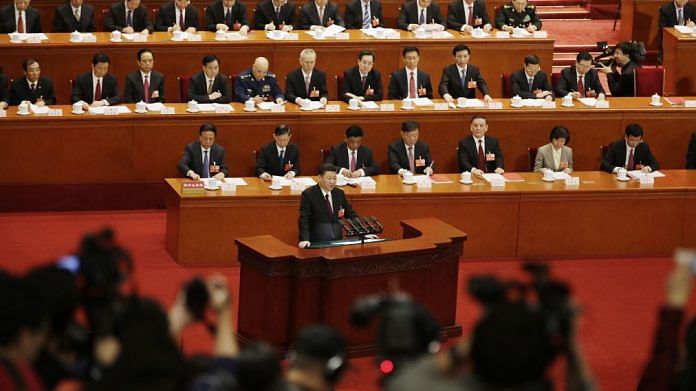In the weeks after the Doklam stand-off began in mid-June 2017, India–China relations fell off a cliff. Those two months were among the strangest I’d experienced in a decade in China. For seventy-two days, I would go to the Ministry of Foreign Affairs building every afternoon to listen to what became an almost daily rant aimed at India. I hadn’t, in a decade, seen the atmosphere so vitiated, so much so that the non-stop anti-India propaganda began to make itself felt in everyday life. The ‘Donglang incident’, as China called it, using the Chinese name for Doklam, became a daily topic of conversation on Beijing taxi rides. Some Indian businessmen were hearing from Chinese partners that it was unofficially a time to not do business with India. Even the country’s most beloved Indian film star, Aamir Khan, had to quietly put a film release in China on hold.
The PLA invite came one month into the stand-off, as the warnings began to reach fever pitch. The PLA senior colonel, Wu Qian, launched into what could only be called a stunning – and very well-rehearsed – diatribe, aimed perhaps as much at his domestic audience as at India.
‘Our willingness and resolve to defend our sovereignty,’ he thundered, ‘is indomitable. We will do so whatever the cost. It may be difficult to shake a mountain, but it is even more difficult to shake the PLA.’ Then he did the unthinkable, which was to mention what officials in India and China almost never bring up: the 1962 war.
Also read: Modi must look at Xi’s military modernisation in last 8 yrs to understand Galwan aggression
Since Xi Jinping took over as the general secretary of the Communist Party of China and became president of the People’s Republic of China in November 2012 and March 2013 respectively, perhaps the most marked difference from his predecessor, Hu Jintao, has been in his dealings with the military. Under the terms of his succession as head of the Party and as president, Xi was also given his third post – Chairman of the Central Military Commission (CMC), putting him in the unique position of commanding the Party, government and military all at once.
On 1 February 2016, Xi announced what the PLA Daily described as ‘the largest scale military reform since the 1950s’. The reforms cemented his direct control over every sphere of the vast military, which has, for decades, functioned as a state within a state, with untrammelled power and nil supervision. With four main components – the army, navy, air force and Second Artillery Corps that commands missiles and nuclear weapons – the PLA had been run by a vast bureaucracy, spread over four general departments – general staff, political, logistics and armament. These were largely autonomous fiefdoms: favoured generals promoted their own, lined their pockets, and ruled over vast bureaucracies and commercial interests worth billions.
In January 2016, Xi, in one swift stroke, disbanded the four departments and brought them under the direct control of the CMC. Cut to size, they were placed at par with fifteen smaller, specialized functional ‘services’ departments, including one devoted to anti-corruption and ‘discipline inspection’. So, for the first time in the PLA’s history, the CMC took control of its entire administration.
A second major reform was consolidating what were earlier seven sprawling military area commands covering China’s entire territory into five theatre commands, to be responsible for combat readiness and to report directly to the CMC. For the first time, the five theatres also had a joint command of integrated land, air and navy services, in addition to two new services that have been set up: a PLA Rocket Force that would be a scaled-up Second Artillery Corps and control China’s missiles; and a PLA Strategic Support Force, which would, according to observers, include an expanded cyber warfare division.
The relationship between the Party and the PLA is complex. So concerned is the civilian Party leadership about control over the PLA that not a month goes by in Beijing without a high-profile announcement reiterating that the PLA’s loyalty must be only to the Party. Troops are made to undergo political training, sitting through hours of study of Marxism and Mao Zedong Thought, and now, of course, what is called Xi Jinping Thought. In practice, however, the PLA has largely been left to its own devices. In a sense, its loyalty was bought: the army was given vast commercial interests, from real estate to valuable industries – much of which it lost following military reforms in the 1990s – and supported by a ballooning defence budget that has recorded annual double-digit growth this past decade, reaching $180 billion in 2020.
Also read: India in Ladakh is breaking ‘China is invincible’ myth. Pentagon needs to catch up
Xi’s reforms are aimed at improving the PLA’s combat effectiveness and ability to project power – a challenge India will have to grapple with. Centralizing PLA decision-making in the hands of the CMC, Xi wants to transform what has historically been a land-dominated military into a nimble, integrated force. To that end, he announced a demobilization of 3,00,000 troops of the 2.3 million-strong PLA in September 2015.
By no means are these reforms an overnight transformation. Through the reforms what is being finally implemented is a strategy adopted in 1993 after the Gulf War. Given the PLA’s history as a ‘revolutionary army’, with its special historical role that cast a long shadow over other services, it has been difficult for the Party to turn it into an integrated force.
The reforms will dramatically alter the PLA’s projection of power beyond China’s borders. As Fravel told me, the orientation of the five new theatres is ‘created to align China’s strategic directions with the command of troops’. The northern theatre will focus on the Korean peninsula, the central theatre on the defence of Beijing, the eastern theatre on Taiwan and to a lesser extent the Senkaku/Diaoyu dao Islands that are contested with Japan, the southern theatre on the South China Sea, and the western theatre on India.
For India, the reforms could widen the asymmetry along the disputed LAC. In the past decade, China has already built a huge infrastructure network of highways, railway lines and airports across the Tibetan plateau. The idea is to be able to mobilize, at short notice, a vast number of assets to win a ‘high-tech local war’. The integration of commands, if successful, will further facilitate this mission. Xi’s PLA reorganization may also answer the long-running question of whether the PLA has been an impediment to improving conditions on the border.
‘For years, India’s wrestled with the question of whether border incursions, which seem to occur at inopportune times, are the product of local commanders acting autonomously or whether they are directed and managed by the senior leadership in Beijing,’ Jeff M. Smith, research fellow at the Heritage Foundation and author of Cold Peace: China-India Rivalry in the Twenty-first Century, told me. ‘For instance, after the three-week border incursion in Chumar that overshadowed President Xi’s inaugural visit to India, he gave what appeared to be a relatively stern and public lecture to the PLA top brass within days of returning from his trip stressing the pre-eminence of Party loyalty. On the other hand, the commander of the military region responsible for that section of the China–India border was later promoted.’
 This excerpt from ‘India’s China Challenge: A Journey Through China’s Rise And What It Means For India’ by Ananth Krishnan has been published with permission from HarperCollins India.
This excerpt from ‘India’s China Challenge: A Journey Through China’s Rise And What It Means For India’ by Ananth Krishnan has been published with permission from HarperCollins India.




Good idea to invite your readers to broaden horizon – instead of just giving off the cuff comments!
A local military commander cannot take a rest room break without President Xi’s approval.